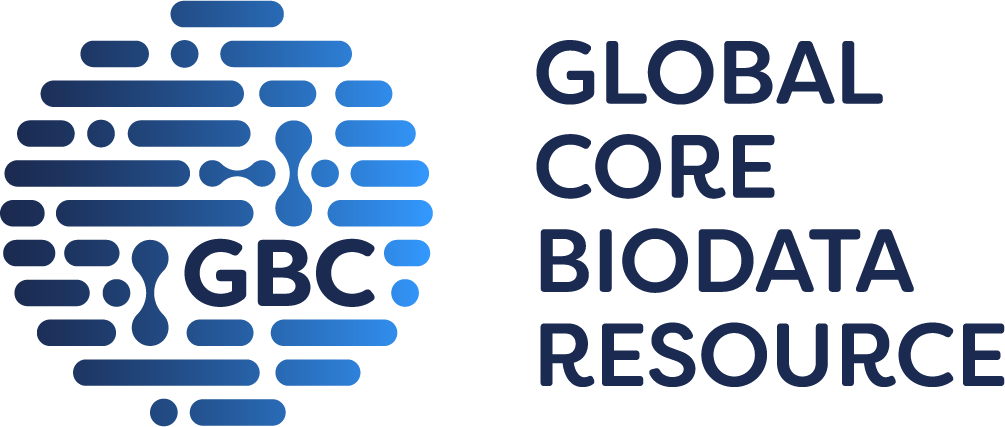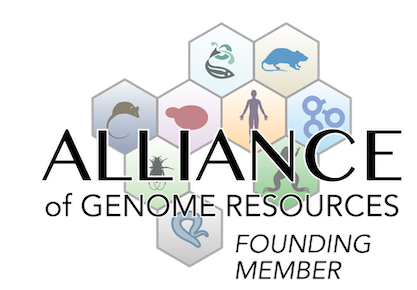homeostasis/metabolism
| N |
• mice show normal energy expenditure and respiratory exchange ratio (RER) on chow, high-glucose diet (HGD), and high-fat diet (HFD) when fed ad libitum
• on all diets (chow, HGD, and HFD), plasma free fatty acid levels remain unchanged in both the fasted and refed state
|
|
• on a chow diet, mice fasted overnight and then i.p. injected with 0.3 U/kg insulin or i.g. gavaged with 2.5 g/kg glucose show significantly higher plasma FA levels than similarly treated wild-type controls, indicating disrupted insulin-mediated suppression of FA release
• after 12 weeks on a high-glucose diet (HGD) or a high-fat diet (HFD), mice fasted overnight and injected with insulin show higher plasma FA levels than similarly treated wild-type controls
|
|
• on chow and HFD, 20-week-old mice show a significant increase in plasma triacylglycerol levels in the refed, but not in the fasted, state
• however, on HGD, plasma triacylglycerol levels remain unchanged in both the fasted and refed state
|
|
• qRT-PCR analysis shows reduced mRNA expression of glucose metabolism-related genes in eWAT; mRNA expression of Gck (glucokinase) is significantly decreased in the refed state while Pck1 (phosphoenolpyruvate carboxykinase 1, cytosolic; aka Pepck) is decreased in the fasted state
|
|
• on HGD, mice show a significant increase in blood glucose levels in the refed, but not in the fasted, state
• however, on chow and HFD, blood glucose levels remain unchanged in both the fasted and refed state
|
|
• on a chow diet, 20-week-old mice fasted overnight and then gavaged with 2.5 g/kg glucose show a moderate increase (62%) in plasma insulin levels at 15 min, but not at 30 min, after gavage
• after HGD feeding for 18 weeks or longer, 25-week-old mice fasted overnight and then refed for 2 h show significantly higher plasma insulin levels than similarly treated wild-type controls
• however, HGD-fed mice show no significant changes in food intake or plasma leptin levels
|
|
• on a chow diet, old (60-week-old or older), but not young (14-week-old), mice show impaired glucose tolerance in an i.p. glucose tolerance test (GTT) test
• glucose tolerance is already impaired after 12 weeks of HFD feeding and more severely impaired after long-term HFD feeding (30 weeks)
• however, glucose tolerance remains unchanged after 12 weeks of HGD feeding
|
|
• on a chow diet, young (13-week-old) mice show moderately decreased insulin sensitivity in an i.p. insulin tolerance test (ITT) test with no changes in glucose tolerance, while old (60-week-old or older) mice show both impaired insulin sensitivity and impaired glucose tolerance
• mice develop insulin resistance independently of diet, that is, both after HGD feeding for 18 weeks or longer and after long-term HFD feeding (30 weeks)
• however, no reduction in insulin sensitivity is noted after 12 weeks of HGD or HFD feeding
|
|
• on a chow diet, mice fasted overnight and then refed for 1 hr show a significant reduction of Pde3b (phosphodiesterase 3B, cGMP-inhibited) mRNA expression in epididymal WAT (eWAT)
• moreover, PDE3B protein expression is markedly reduced in eWAT and in stromal vascular cell (SVC)-derived adipocytes (fully differentiated SVCs harvested on day 7)
• in vitro, re-expression of Abhd15 in SVC-derived adipocytes via transfection with a pMSCV-Abhd15 retrovirus rescues PDE3B expression by ~50%
|
|
• on a chow diet, mice fasted overnight and then refed for 1 h show significantly reduced plasma adiponectin levels both at 20 weeks and at 54 weeks age
• after HGD feeding for 18 weeks or longer, 25-week-old mice fasted overnight and then refed for 2 h show significantly lower plasma adiponectin levels than similarly treated wild-type controls
|
|
• qRT-PCR analysis shows reduced mRNA expression of de novo lipogenesis (DNL) pathway genes, such as Fas and Acss2, in the eWAT of mice in the refed state
• after insulin treatment, stromal vascular cells (SVCs) isolated from sWAT and fully differentiated into adipocytes incorporate significantly less 14C-glucose into total lipids, FFAs, monoacylglycerol/phospholipids (MAG/PLs) and diacylglycerol (DAG) than insulin-treated SVC-derived adipocytes from wild-type mice
• however, fully differentiated SVCs show normal 14C-glucose incorporation into total lipids under basal conditions and into TGs and cholesteryl esters (CEs) after insulin treatment
|
|
• on a chow diet, 20-week-old mice fasted overnight and then i.p. injected with 0.3 U/kg insulin show significantly higher plasma fatty acid (FA) levels than similarly treated wild-type controls at 15-, 30- and 60- min postinjection; circulating FA levels remain as high as in the fasted state, unlike in insulin-injected wild-type mice where plasma FA levels are strongly reduced relative to the fasted state
• similarly, on a chow diet, 22-week-old mice fasted overnight and then i.g. gavaged with 2.5 g/kg glucose to stimulate insulin secretion show significantly higher plasma FA levels than similarly treated wild-type controls at 15- and 30-min post gavage, indicating disrupted insulin-mediated suppression of FA release and unsuppressed lipolysis in WAT
• insulin-mediated suppression of lipolysis is consistently abrogated in mice fed a high-glucose diet (HGD) or a high-fat diet (HFD) for 12 weeks
• ex vivo, eWAT explants from chow-fed insulin-injected (0.6 U/kg) mice show no insulin-mediated reduction in FA release, unlike in wild-type explants where FA release is lower upon insulin treatment than during basal conditions
• in the presence of inhibitors for adipose triglyceride lipase (iATGL) and HSL (iHSL), FA release from eWAT explants of chow-fed mice is reduced but still higher than that from wild-type explants
• eWAT and sWAT explants from HFD-fed mice show increased basal FA release that can not be lowered by insulin treatment
• however, free glycerol release from eWAT explants is normal in the absence and presence of ATGL or HSL inhibitors
|
adipose tissue
|
• on a chow diet, 20-week-old mice injected with 0.6 U/kg insulin show a marked reduction of adipocyte size in subcutaneous WAT (sWAT) at 20 min postinjection
|
|
• on a chow diet, 20-week-old mice show a significant decrease in interscapular brown adipose tissue (iBAT) weight in the 12 h fasted state and 20 min after 0.6 U/kg insulin injection
• however, iBAT weight is normal in the ad libitum fed state
|
|
• on a chow diet, 20-week-old mice injected with 0.6 U/kg insulin show a significantly lower subcutaneous WAT (sWAT) weight at 20 min postinjection than similarly treated wild-type controls
• however, no changes in sWAT weight are detected in the 12 h fasted or ad libitum fed state
• eWAT weight and liver weight are both normal in the fasted and fed states and remain unchanged after insulin injection
|
|
• on a chow diet, 25-week-old mice fasted overnight and then gavaged with 2.5 g/kg glucose (spiked with 3H-deoxyglucose) show a significant decrease of glucose uptake into eWAT at 20 min post gavage
• however, no differences in glucose uptake are noted in sWAT or BAT
|
|
• on a chow diet, overnight-fasted 20-week-old mice injected with saline or 0.6 U/kg insulin show increased phosphorylation of protein kinase A (PKA) substrates and of hormone-sensitive lipase (HSL) at S660 in epididymal and subcutaneous WAT (eWAT and sWAT)
• insulin-injected mice show markedly decreased phosphorylation of PKB/AKT (a master regulator of glucose and lipid metabolism in adipocytes) in eWAT and sWAT
|
cellular
|
• on a chow diet, 25-week-old mice fasted overnight and then gavaged with 2.5 g/kg glucose (spiked with 3H-deoxyglucose) show a significant decrease of glucose uptake into the liver at 20 min post gavage
|
|
• on a chow diet, 25-week-old mice fasted overnight and then gavaged with 2.5 g/kg glucose (spiked with 3H-deoxyglucose) show a significant decrease of glucose uptake into eWAT at 20 min post gavage
• however, no differences in glucose uptake are noted in sWAT or BAT
|
|
• on a chow diet, 25-week-old mice fasted overnight and then gavaged with 2.5 g/kg glucose (spiked with 3H-deoxyglucose) show a significant decrease of glucose uptake into the heart at 20 min post gavage
• however, no differences in glucose uptake are noted in the quadriceps skeletal muscle
|
cardiovascular system
|
• on a chow diet, 25-week-old mice fasted overnight and then gavaged with 2.5 g/kg glucose (spiked with 3H-deoxyglucose) show a significant decrease of glucose uptake into the heart at 20 min post gavage
• however, no differences in glucose uptake are noted in the quadriceps skeletal muscle
|
muscle
|
• on a chow diet, 25-week-old mice fasted overnight and then gavaged with 2.5 g/kg glucose (spiked with 3H-deoxyglucose) show a significant decrease of glucose uptake into the heart at 20 min post gavage
• however, no differences in glucose uptake are noted in the quadriceps skeletal muscle
|
growth/size/body
| N |
• at 20 weeks of age, mice fed a standard chow diet, a high-glucose diet (HGD) or a high-fat diet (HFD) ad libitum show no differences in body weight and body mass composition relative to age- and diet-matched wild-type controls
|
behavior/neurological
| N |
• mice show normal food intake on chow, high-glucose diet (HGD), and high-fat diet (HFD) when fed ad libitum
|



 Analysis Tools
Analysis Tools